Altai
 Bashny.Net
Bashny.Net
The Altai Republic is located in the heart of Asia, at the junction of the Siberian taiga, Kazakh steppes and semi-deserts of Mongolia. It is a mountainous country with an extremely picturesque landscape, "Russian Tibet" in the heart of Eurasia at the junction of several states, natural zones and cultural worlds.

On the territory of the Altai Republic is a state border of the Russian Federation with foreign countries: China, Mongolia and the former Soviet republics - Kazakhstan. The Altai Republic is the administrative border with the following subjects of the Russian Federation - the republics of Tuva and Khakassia, Altai Territory and Kemerovo region.
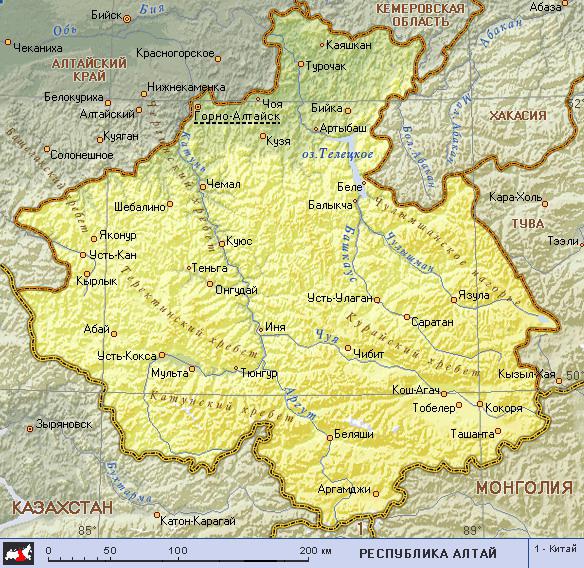
The climate in the Altai Republic is temperate continental, with a relatively short hot summers (June-August) and long (November-March) cold places very frosty winters.
The average annual temperature from + 1 ° C to -6, 7 ° C. January temperatures range from -9, 2 ° C to -31 ° C. July temperature range from + 11 ° C to 19 ° C. The average annual rainfall of 100 to 1000 mm.
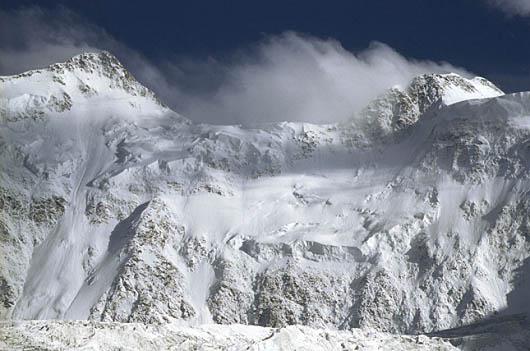
The predominant terrain - mountain. The Republic is situated within the Russian part of the mountain range of Altai (Gorny Altai), respectively relief republic is characterized by high mountain ridges separated by narrow and deep river valleys, rare broad intermountain basins.
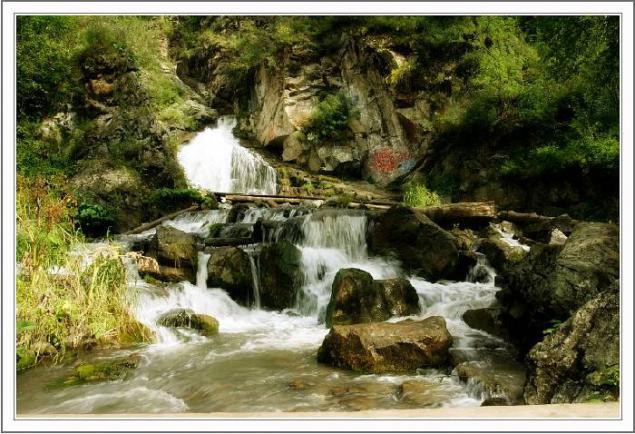
The highest mountain Belukha (4506 m) is the highest point in Siberia.
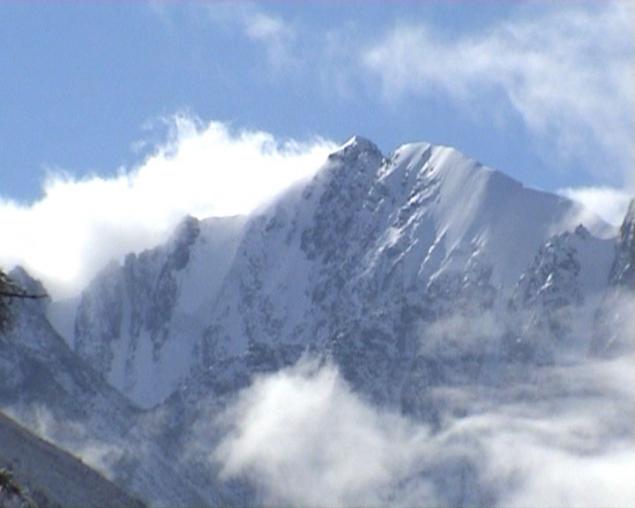
Geographical features of the republic led to the development of two types of transport: car (more than 90% of all types of transport) and air (passenger and mail transportation). Road transport is the leading in the country. The length of roads - more than 3, 2 thousand. Km of which 541 km - the main highway, Route federal Novosibirsk-Biysk-Tashanta (Chuiski).
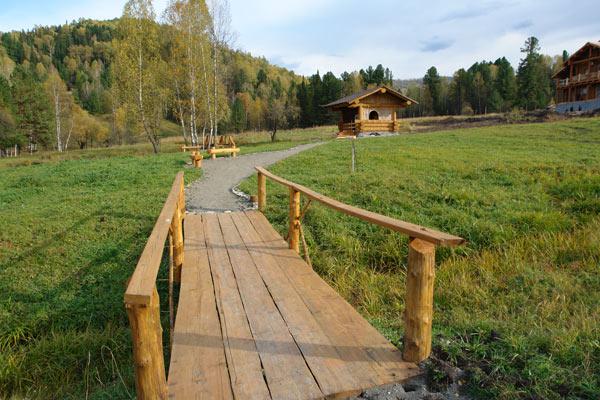
One of the most important natural resources of Gorny Altai are its water resources. The hydrographic network of the country has more than 20 thousand water courses stretching for more than 60 thousand km and about 7000 lakes with a total area of more than 700 square kilometers The largest river - the Biya and Katun which merge to form the Ob River - one of the largest rivers of Siberia. The largest lake Teletskoye with water surface area - 230, 8 sq. km and a maximum depth - 325 meters.
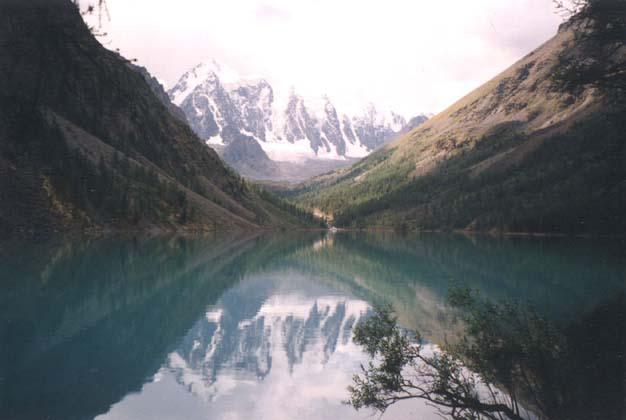
Huge reserves of high quality fresh water enclosed in the mountain lakes of Altai. Only in Lake Teletskoye more than 40 cubic meters. km of the purest water.
Potential groundwater reserves are estimated at 22,000 cubic meters per day, and current usage is only about 44 thousand cubic meters per day. In the Altai Mountains are known sources of mineral waters, which are healing.
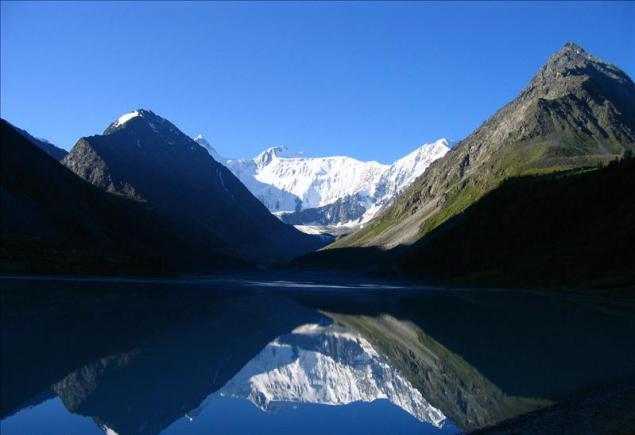
Altai glaciers contain vast reserves of fresh water. The total amount of ice recorded Altai glaciers reaches 57 cubic km, which corresponds to 52 cubic km of water. In general, the supply of water in glaciers exceeds the average annual flow of the rivers of the Altai equal to 43 cubic km per year. The largest glaciers Big Taldurinskiy - 35 square kilometers, Mensah - 21 square kilometers, Sofia - 17 sq km, Great Maashey - 16 sq.km.

Mineral Resources of the Republic of Altai are varied in the number of identified mineral resources and significant proven reserves. But today, the mineral resource potential of the region is almost never used. It is being developed in small scale gold ore and molybdenum-tungsten deposits, deposits of decorative stone and building materials.

Explored several large gold sites with geological reserves of hundreds of tons of ore, and dozens of tons of alluvial gold. Revealed a unique integrated mine reserves of rare earth metals (tantalum, lithium, rubidium, cesium, bismuth). It is estimated with different detail several fields (cobalt, tungsten, molybdenum, bismuth, copper, silver, gold, mercury). Explored and prepared for the operation of the deposit: Chagan-Uzun mercury, Oroktoyskoe Koskolskoe and marble (ten million cubic meters in volume and unique decoration) Holzunskoe iron (with reserves of about one billion tonnes), coal tar and Taldydyurgunskoe Pyzhinskoe brown coal. Under the study and development are deposits: Lebedskoe wollastonite (unique for quality raw materials), Poddelikskoe gypsum (high medical), a variety of inorganic pigments, mineral and curative table waters, therapeutic mud.
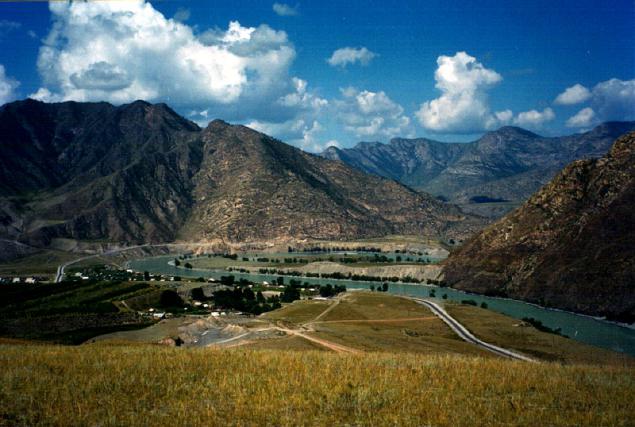
Revealed deposits of almost all types of construction materials, gemstones, decorative and collectible stone.
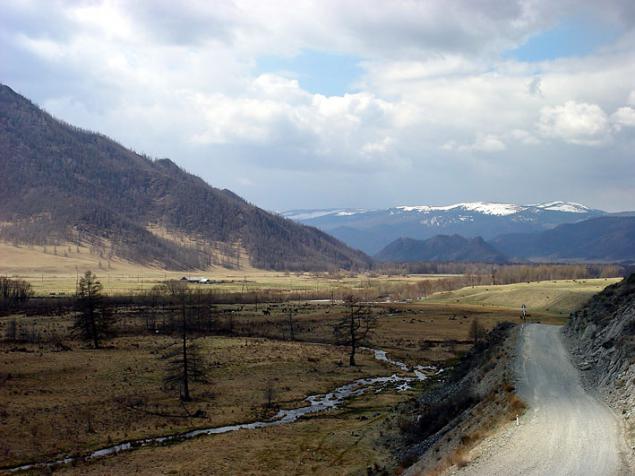
The long process of historical development of the territory, the contrast of modern landscapes led to a high diversity of plant community in the country. Plant resources of the republic there are more than two thousand species of plants, including 200 species of endemic plants found only in the Altai Mountains.
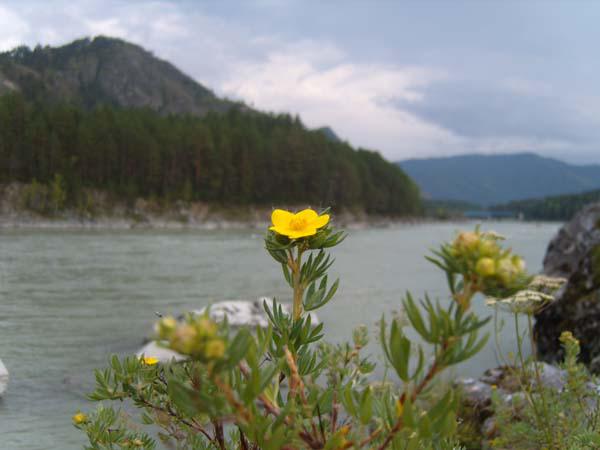
The Altai Republic is rich in energy resources. The hydropower potential is estimated at 80 billion kWh. Most have a strong potential of the river Katun (31 billion kWh), Argut (7, 2), Sensing (7, 1). The country promising application of mini and micro hydropower plants (1-100 kW) power supply for the small consumers (shepherd, tourist sites, farms, processing plants of agricultural products).

Gorny Altai has a cultural and national traditions that may be of interest to the fields of science, archeology, folklore, linguistics, history and others.
Such unique natural sites like Lake Teletskoye, Mount Belukha, Altai and Katun reserve by UNESCO on the list of World Heritage of Humanity.

and a few photons from the Altai ...
just ...
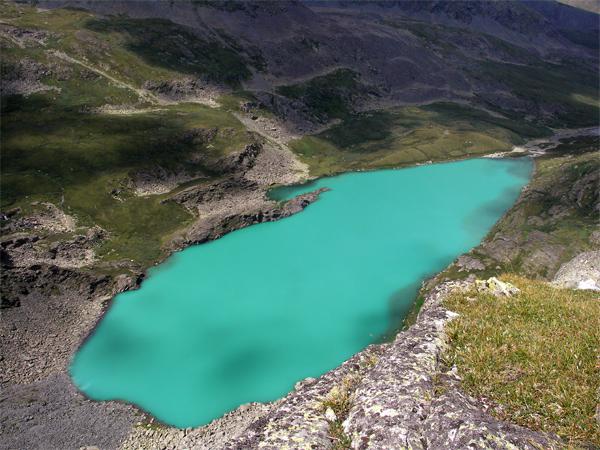
two ...

three ...
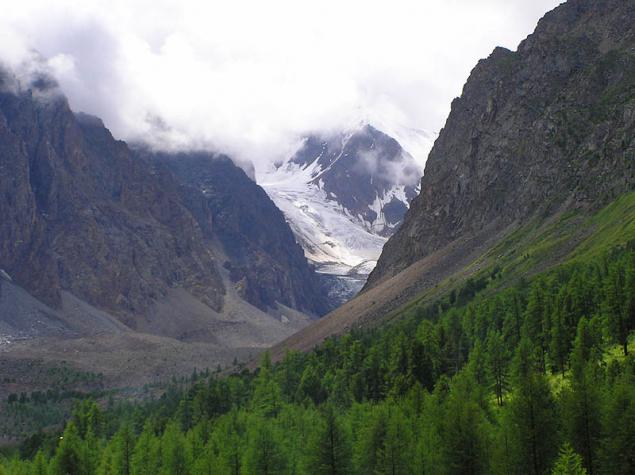
four ...
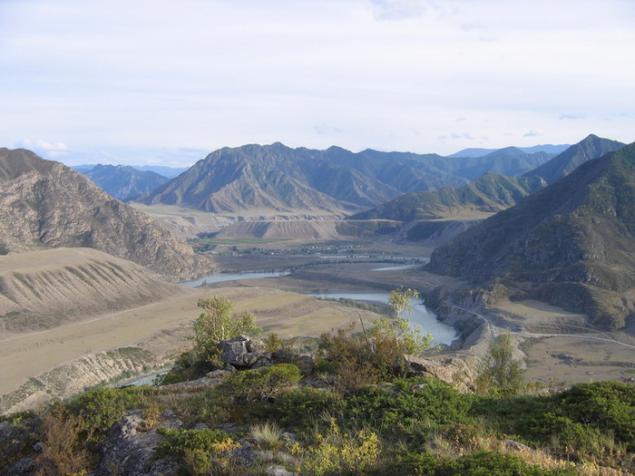
five ...

six ...
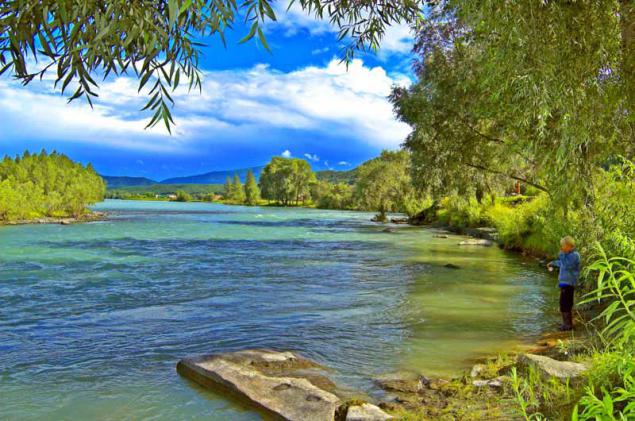
seven ...
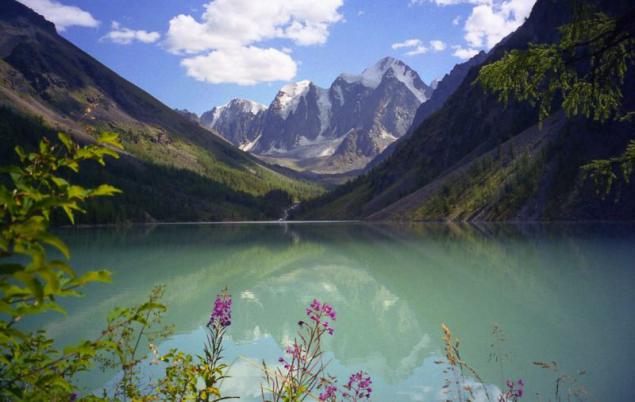
eight ...
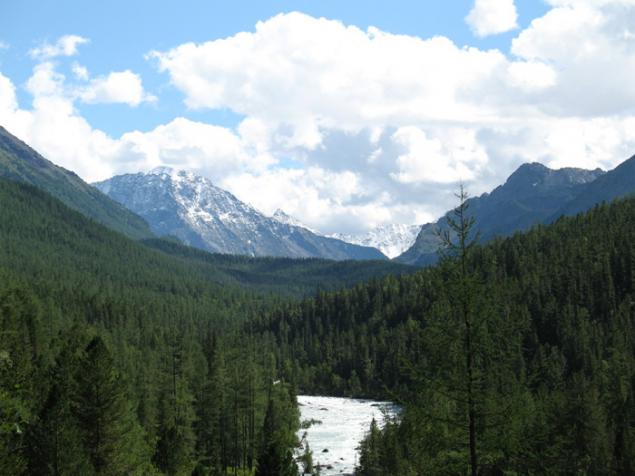
Well, nine ... beauty !!!

Source:

On the territory of the Altai Republic is a state border of the Russian Federation with foreign countries: China, Mongolia and the former Soviet republics - Kazakhstan. The Altai Republic is the administrative border with the following subjects of the Russian Federation - the republics of Tuva and Khakassia, Altai Territory and Kemerovo region.

The climate in the Altai Republic is temperate continental, with a relatively short hot summers (June-August) and long (November-March) cold places very frosty winters.
The average annual temperature from + 1 ° C to -6, 7 ° C. January temperatures range from -9, 2 ° C to -31 ° C. July temperature range from + 11 ° C to 19 ° C. The average annual rainfall of 100 to 1000 mm.

The predominant terrain - mountain. The Republic is situated within the Russian part of the mountain range of Altai (Gorny Altai), respectively relief republic is characterized by high mountain ridges separated by narrow and deep river valleys, rare broad intermountain basins.

The highest mountain Belukha (4506 m) is the highest point in Siberia.

Geographical features of the republic led to the development of two types of transport: car (more than 90% of all types of transport) and air (passenger and mail transportation). Road transport is the leading in the country. The length of roads - more than 3, 2 thousand. Km of which 541 km - the main highway, Route federal Novosibirsk-Biysk-Tashanta (Chuiski).

One of the most important natural resources of Gorny Altai are its water resources. The hydrographic network of the country has more than 20 thousand water courses stretching for more than 60 thousand km and about 7000 lakes with a total area of more than 700 square kilometers The largest river - the Biya and Katun which merge to form the Ob River - one of the largest rivers of Siberia. The largest lake Teletskoye with water surface area - 230, 8 sq. km and a maximum depth - 325 meters.

Huge reserves of high quality fresh water enclosed in the mountain lakes of Altai. Only in Lake Teletskoye more than 40 cubic meters. km of the purest water.
Potential groundwater reserves are estimated at 22,000 cubic meters per day, and current usage is only about 44 thousand cubic meters per day. In the Altai Mountains are known sources of mineral waters, which are healing.

Altai glaciers contain vast reserves of fresh water. The total amount of ice recorded Altai glaciers reaches 57 cubic km, which corresponds to 52 cubic km of water. In general, the supply of water in glaciers exceeds the average annual flow of the rivers of the Altai equal to 43 cubic km per year. The largest glaciers Big Taldurinskiy - 35 square kilometers, Mensah - 21 square kilometers, Sofia - 17 sq km, Great Maashey - 16 sq.km.

Mineral Resources of the Republic of Altai are varied in the number of identified mineral resources and significant proven reserves. But today, the mineral resource potential of the region is almost never used. It is being developed in small scale gold ore and molybdenum-tungsten deposits, deposits of decorative stone and building materials.

Explored several large gold sites with geological reserves of hundreds of tons of ore, and dozens of tons of alluvial gold. Revealed a unique integrated mine reserves of rare earth metals (tantalum, lithium, rubidium, cesium, bismuth). It is estimated with different detail several fields (cobalt, tungsten, molybdenum, bismuth, copper, silver, gold, mercury). Explored and prepared for the operation of the deposit: Chagan-Uzun mercury, Oroktoyskoe Koskolskoe and marble (ten million cubic meters in volume and unique decoration) Holzunskoe iron (with reserves of about one billion tonnes), coal tar and Taldydyurgunskoe Pyzhinskoe brown coal. Under the study and development are deposits: Lebedskoe wollastonite (unique for quality raw materials), Poddelikskoe gypsum (high medical), a variety of inorganic pigments, mineral and curative table waters, therapeutic mud.

Revealed deposits of almost all types of construction materials, gemstones, decorative and collectible stone.

The long process of historical development of the territory, the contrast of modern landscapes led to a high diversity of plant community in the country. Plant resources of the republic there are more than two thousand species of plants, including 200 species of endemic plants found only in the Altai Mountains.

The Altai Republic is rich in energy resources. The hydropower potential is estimated at 80 billion kWh. Most have a strong potential of the river Katun (31 billion kWh), Argut (7, 2), Sensing (7, 1). The country promising application of mini and micro hydropower plants (1-100 kW) power supply for the small consumers (shepherd, tourist sites, farms, processing plants of agricultural products).

Gorny Altai has a cultural and national traditions that may be of interest to the fields of science, archeology, folklore, linguistics, history and others.
Such unique natural sites like Lake Teletskoye, Mount Belukha, Altai and Katun reserve by UNESCO on the list of World Heritage of Humanity.

and a few photons from the Altai ...
just ...

two ...

three ...

four ...

five ...

six ...

seven ...

eight ...

Well, nine ... beauty !!!

Source:
Tags
See also
Russia! We have much to be proud of!
The beauty of our Earth
Can not believe it's - Russia
Disappeared of the country (10 photos)
The ends of Russia
Summer in Siberia
Peat bogs are burning in the suburbs, even in winter!
Doomsday System "Perimeter"
Beautiful Russian roads
Chinese ID-card. From shabby pieces of paper to card "all in one"

















